The Elements of Fashion Design

We have all heard of Elements and Principles of Art & Design. Principles such as Balance, Unity, Emphasis, Repetition/Pattern, movement, rhythm, harmony, etc. Now these principles remain the same across all design/art fields, since these are more directional towards the approach we wish to follow in our works/products.
Also, information about the above is available, literally in abundance across the internet. With a simple search, we can get more and enough information about the principles and elements of art/design.
*But I will be taking references to the principles in this blog if, in relation to the elements I wish to explain, please understand, this is for better understanding and elaborating the usage of the elements and how principles of art/design are affected by the usage of these elements
But here I will explain (according to me or in my perception) about the elements of Fashion designing. Now what are elements? Let me answer that question first!
Elements are physical entities that can be used towards making a product/design/piece of art. Now what are these entities? Like the given space for a designer/artist to make his/her product/artistic piece such as a canvas for an artist, a plain mug for a designer/artist to decorate, a piece of cloth for a designer to make it into a product, etc., similarly when we talk about another element such as colour, then using the element of colour, what are the primary and complimentary colour palette/surface that the artist/designer wishes to achieve on his/her product/piece of art?
Without further ado, what are the physical entities that define a particular product, in this sense, a garment?
In Fashion design I can list about 5 definite elements which can further be broken into sub lists under certain elements, I am breaking in the sub list so as to explain better and for the reader to understand better and more clearly. They are:-
- Silhouette (pattern, similar to shape/form)
- Colour
- Textile/Fabric
- Surface (can be further divided into 2D & 3D which I will explain further)
- Trims & Details
So what do these elements mean and how can we use them? Or a better question would be, how would it profit the design/garment/product by using these elements and to what extent? Although I wouldn’t get into the details of extent as the topic moves towards principles in that sense and its not my place to judge as each one’s aesthetics can be different; and also, the fact we are not concentrating on principles in this blog.
*Also, please note I will be using imagery from my own designs/shoots to avoid any conflict of interest
Silhouette
Silhouette in fashion design can be described (in my own words) as a final shape/form that is to be achieved from the product. Fashion is a 3 dimensional space, the art of beautifying/decorating the human body. It could the play of achieving a certain volume or a certain fit or a certain shape.
And, how does one achieve this? Like I have said in my previous blog – ‘The importance of technical knowledge in Fashion Design and the Basic Skill Set’, its achieved through Pattern Making/Draping. Using basic Geometry skills and understanding of a 3D form of Basic Human Anatomy.
Using a 2D space we achieve a 3D form using pattern making/draping techniques.
Colour
The human eye can differentiate about 6 million colours and what is colour? The different shades of hue and/or saturation that is possible due to the reflection of different wavelengths of light, Okay! this might sound technical, which, I will not delve into, rather let us understand this a gift given to us and how, as designers we can use them.
The element of Colour can be used to obtain many principles such as Harmony, emphasis, contrast, etc, by the usage in quantity of the chosen colour palette.
In fashion design and in most design paths we create colour palettes so as to understand their relationship with the concept/look we are trying to achieve. And, usually we have 2 palettes per concept/product. They are
- Primary/Main Colour Palette – The set of colour/colours which have more emphasis in the product as a direct relation to its perception, for example:- like when we want to portray a strong emotion/feeling such as danger/love/passion which do not have control, we tend to use the colour red which is a colour with abundance of energy or uncontrolled energy, whereas we would shift towards lighter shades of pink, which has a more controlled and harmonious energy. Similarly when we want to portray abundance of happiness, we would choose to use yellow which is again a colour with abundance of energy, whereas we could use hues of orange, which is a more controlled and harmonious energy; or white to show peace and tranquillity, blue is the colour of trust, etc.
- Complimentary Colour Palette – Compliments are smaller details/lesser usage of a given element to be used to accentuate/highlight/compliment a colour/element with more emphasis.
I would also suggest the user to have a read about the colour concepts – colour wheel theories such as
Primary Colour, Secondary Colours, Tertiary Colours
Complimentary Colours – 2 colour, 3 colour, 4 colour and so on, Analogous, triadic, etc
Of course! They are not said and final theories, but, rather guidelines for the uninitiated towards a wiser use of colour palettes for the given product to be designed
I would also suggest some light reading towards Meanings of Colours which could give better understanding to transform a concept towards a tangible colour palette.
Textile or Fabric
Any woven, non woven or knitted fabric can be used under the heading of textile/fabric. Sometimes experimental materials can still be used for avante-garde fashion (publicly unwearable costumes – to better understand this area I would suggest blogs/website related to World of Wearable art) as well.
We could consider the weave/knit/any other technique intended towards affecting the drape/fall/ structure of a particular fabric. But I wouldn’t consider the motifs/colours/other surfaces obtained as that would fall under the categories of colour or surfaces, rather the feel/touch of the fabric, the drape/fall/structure of the fabric; and other terms that affect the state of the product due to the manufactured method of the fabric such as thickness, transparency, etc.
For example:- The drape of medium/heavy weight Linen/Cotton is more restrictive compared to most silk varieties which has more/better drape and fall, thus, volume in both these fabrics will behave differently.
Surface (2D surfaces & 3D surfaces)
Surfaces in fashion can be defined as any treatment done upon a space (in the case of fashion design – textile) to achieve a certain look/in some cases form as well. I have divided this element into 2 Dimensional and 3 Dimensional, let me explain:-
- 2 Dimensional Surfaces – 2 Dimensional surfaces can be defined as any treatment such as weaving/printing/knitting/stitch lines to achieve an intended colour, motif and/or design. Using principles such as emphasis, pattern/repetition, etc. in breadth and width of the given space.
- 3 Dimensional Surfaces – Can be defined as any treatment such as embossing, surface ornamentation, melting, repeat printing, etc. to achieve an intended 3D treatment.
Trims & Details
Trims and detailings in Fashion can be explained as the little details such as closures, bands, pockets, stitch lines, etc. and other materials used to towards a function (in some cases not necessarily, it can even be purely ornamental but in such cases they may fall under surfaces). Now this is one of the most important element in mass manufacturing, as every penny in manufacturing matters, yet, without sacrificing on aesthetics nor the product’s functionality; although, in couture/avante-garde it can purely be only on necessity without paying much attention to it’s functionality.
Do note, many a time this particular element can be confused with the surfaces element, but in most cases only trims and detailing can/need not add to the aesthetics of the garment but necessarily is derived from a necessary function in the garment, like even a stitch line to join two panels of a garment is a trim or detail whereas a stitch line or multiple stitch lines used purely for decorative purpose and not for a necessary function is a surface treatment.
With this, I hope the reader understands the basic elements of design and it’s usage. Of course! there are many authors out there who might specify less or more number of elements but primarily (in my opinion/perception), these are the basic elements, any other specification one can think of, can come as a sub list of the above stated elements.
So, when I am to design any product, it has been a habit for me to break up the product in terms of the 5 elements and design/treat design details individually for each of these elements, work out the different possibilities in parts, and then join the different ideas with respect to the elements (even discard the unnecessary details with respect to the elements) as a whole. Although, these I will be discussing in a later blog when I write about design processes, some annotations can be observed in my past blog namely – The importance of the ‘Black Book’ for every designer.
Thank You.
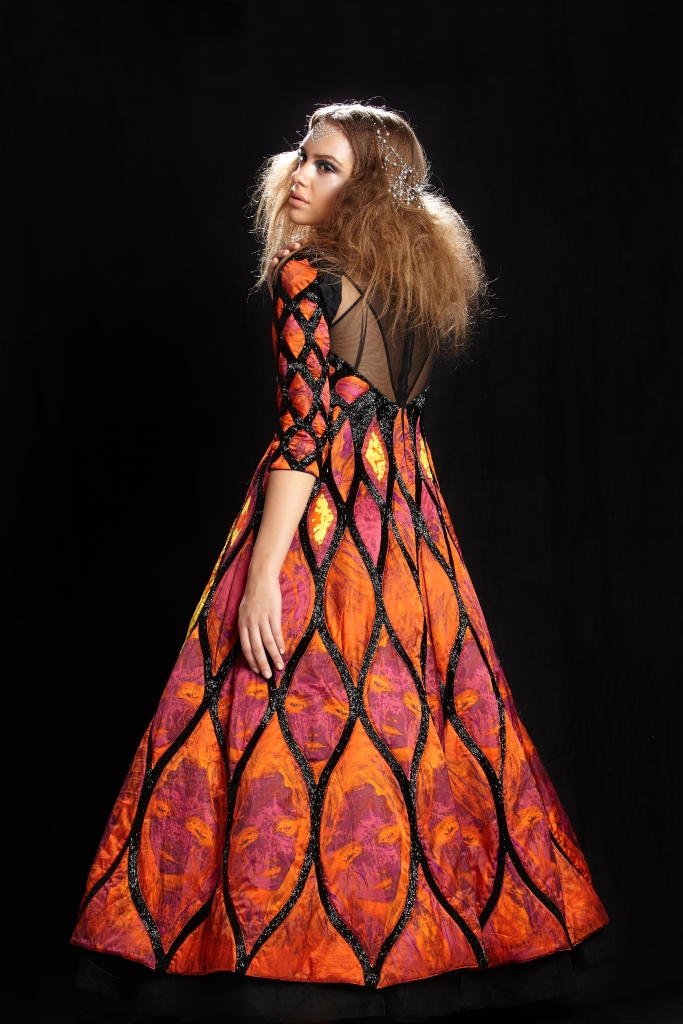

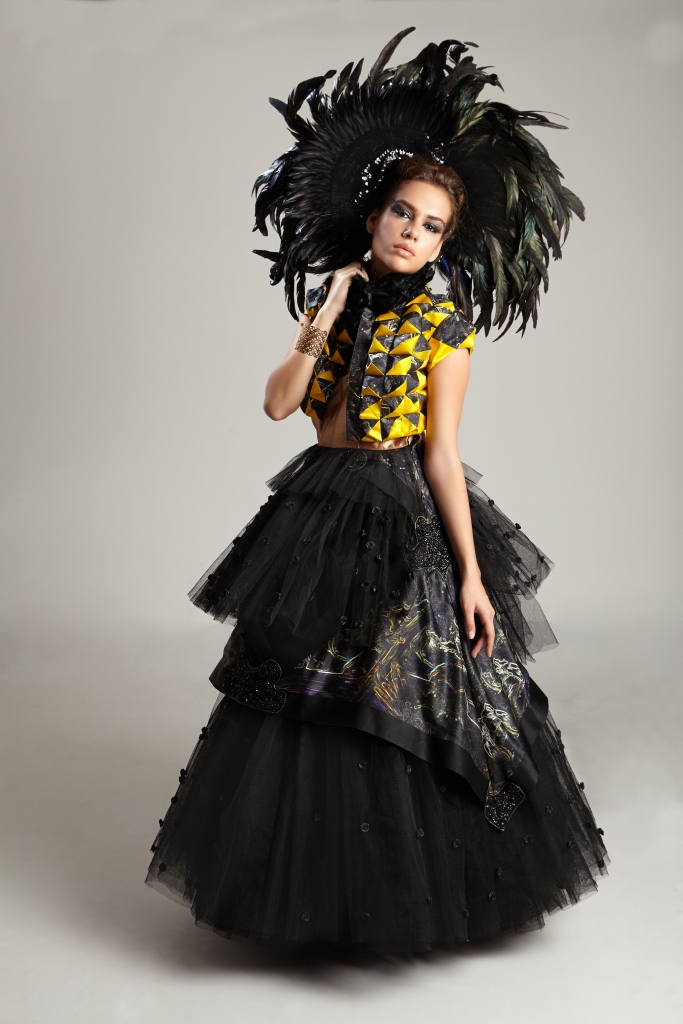
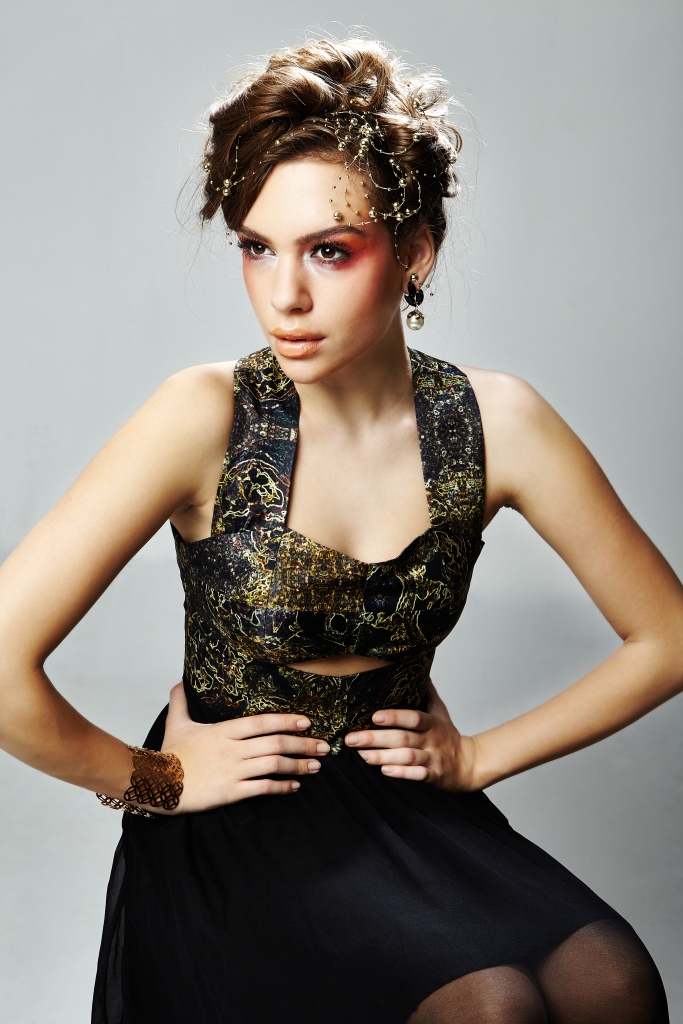

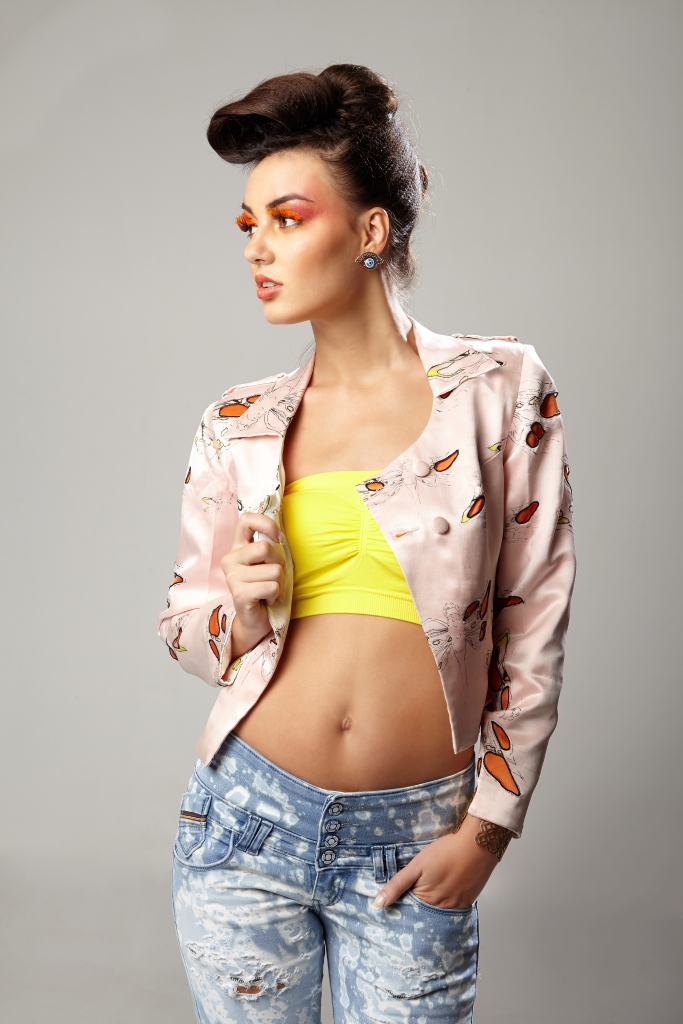
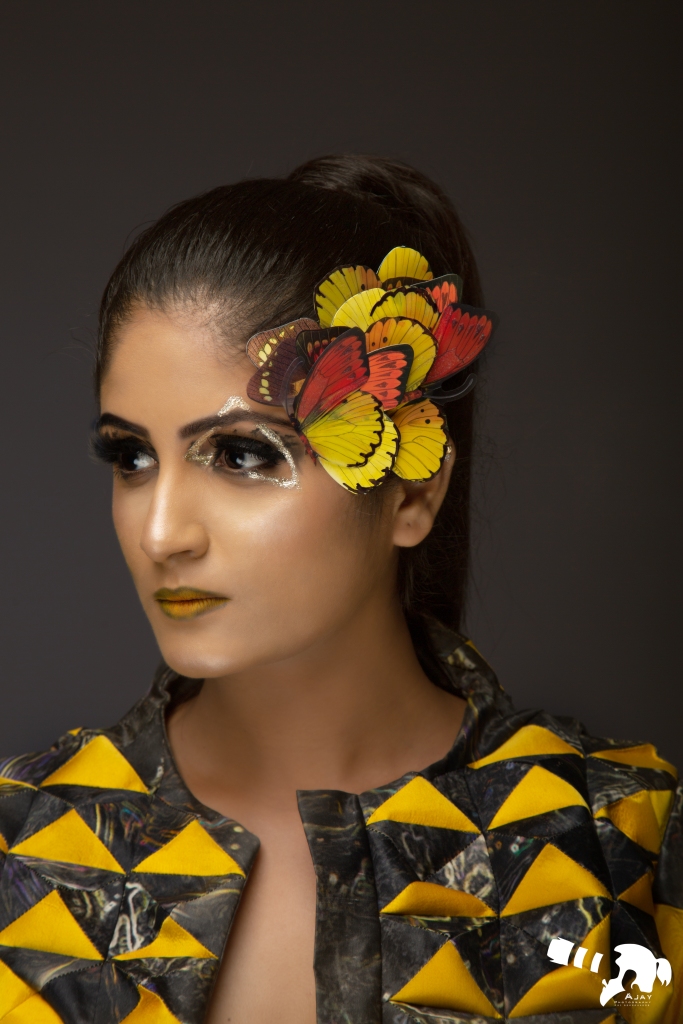
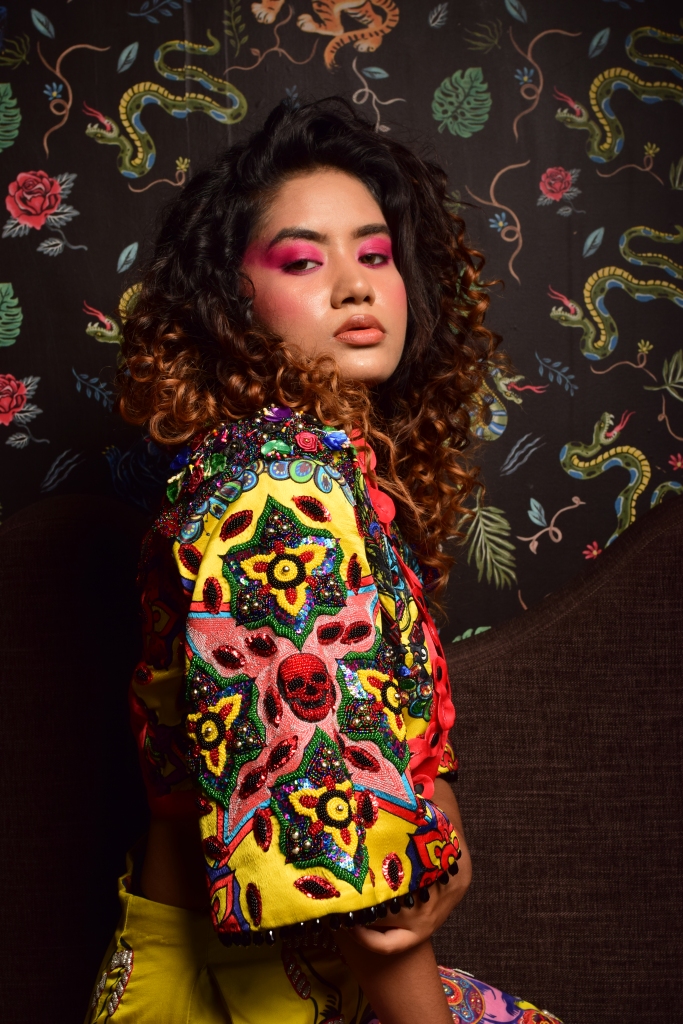

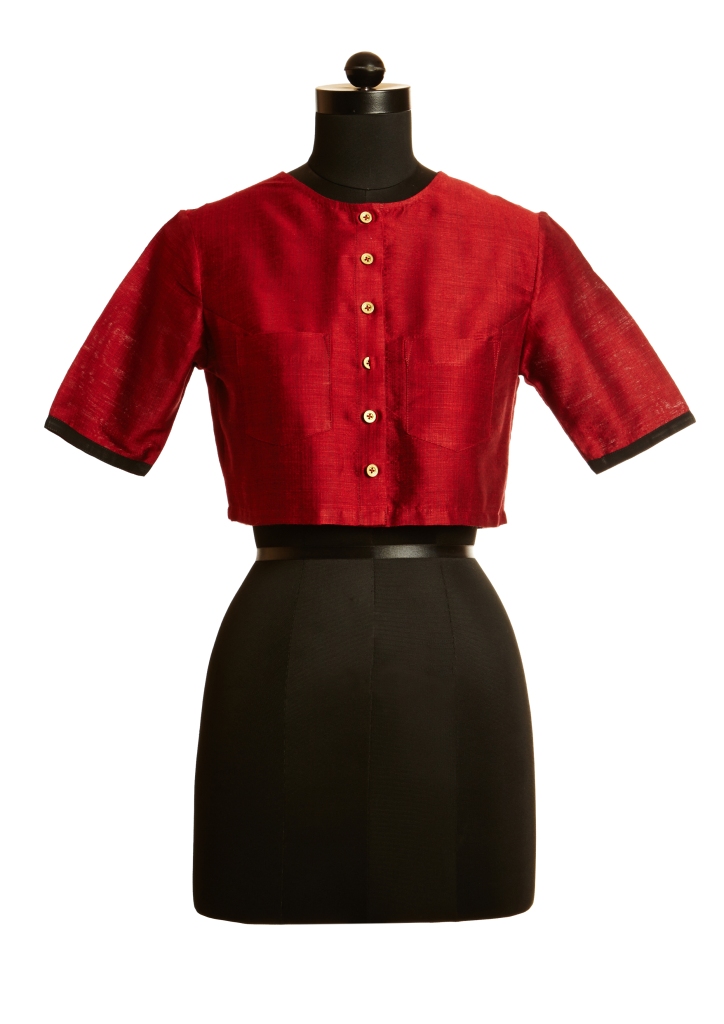
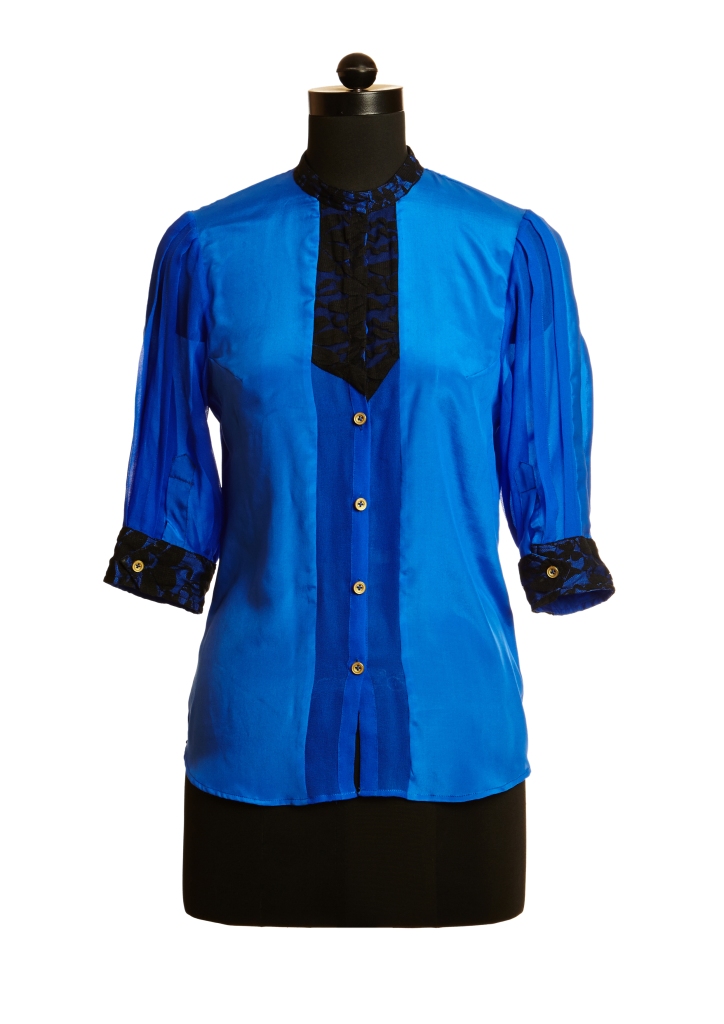

https://stromectol1st.com/# is stromectol the same as ivermectin
Many thanks, Awesome stuff!
who will write my essay for me essay writing services help on writing a personal statement
Reliable information. With thanks.
how to focus on writing an essay how to write an argument essay essays website
Thank you! Numerous content.
essay for college essays writing service college thesis writing help
ivermectin uses price of ivermectin liquid
Really quite a lot of excellent info.
canadian online pharmacies legitimate internet pharmacy drugs from canada with prescription
stromectol dosage for humans stromectol scabies
Thanks a lot! Awesome information!
buy prescription drugs online no prescription pharmacies canadian drugs
Good tips. Appreciate it.
college personal statement essay https://ouressays.com/ help in assignment writing
Great postings. Many thanks.
pharmacy cost comparison canadian pharmacies-247 rx online
Great data. Regards!
value of college education essay https://service-essay.com/ website essay
over the counter erectile dysfunction pills ed pills
Thanks a lot! Helpful stuff.
gre essay writing how to write literary analysis essay resume writing services prices
Many thanks. Awesome stuff!
uc college essay https://altertraff.com/ business letter writing services
Valuable posts. Thank you.
canadian meds best canadian online pharmacy online pharmacies in usa
Whoa quite a lot of excellent facts.
writing essays about literature editing college essays mba thesis writers
Thanks! I appreciate it.
canadian pharmacy cialis 20mg legit online pharmacy discount drugs online pharmacy
You reported it adequately.
college transfer essays writing literary analysis essay website that writes essays
This is nicely expressed. !
compound pharmacy canadianpharmacyusa24h online pharmacy viagra
Well expressed really. .
college writing essay essay writer custom writing companies
https://24hr-pharmacy.top/# discount prescription drugs from canada
Great postings. Regards!
the best college essays https://freshapps.space/ professional ghostwriting services
Nicely put, Appreciate it.
what are college essays essays writing services all ivy writing services
how to order prescription drugs from canada buying from canadian online pharmacies
Amazing all kinds of superb material.
how to write a 250 word essay write my essay citing a website in essay
Thanks a lot! Ample information!
drugstore online shopping humana online pharmacy us pharmacy no prior prescription
purchase doxycycline doxycycline cost uk
Nicely put, Thanks a lot!
best essay writing websites how to write a good cause and effect essay urgent essay writing service
Seriously plenty of awesome data!
writing an essay ppt write my essay best websites for essays
You made your point.
writing a good essay creative college essay top essay writing services
Very good postings. Thanks a lot!
how to cite a website in an essay mla essay editor service writing services rates
You’ve made your point.
bad college application essays https://dissertationwritingtops.com/ best online essay writing services
canadian pharmacy levitra value pack canadian pharmacy checker
You actually expressed that exceptionally well!
how to write a personal narrative essay for college unique college essay write my homework for me
Very good information. Cheers.
good customer service essay writing the personal essay custom writings review
Wonderful data. Appreciate it.
how to write an essay fast and easy college essay sports phd dissertation writing service
Superb info, Many thanks.
how to write literary essay https://theessayswriters.com/ academic writers needed
Info effectively applied..
online medicine to buy drugs for sale drugstore online
Incredible quite a lot of terrific knowledge!
how to write a college level essay https://freshappshere.com/ professional writing company
pharmacy without prescription canadian pharmacy coupon
You’ve made your position very effectively.!
canadian drug stores online pharmacies in canada best price prescription drugs
Well expressed certainly. !
write descriptive essay https://englishessayhelp.com/ custom written dissertations
amoxicillin 500 mg purchase without prescription zithromax without prescription
Terrific facts. With thanks!
can you write my essay for me essaytyper write my summary
canadian pharmacy 365 canada discount pharmacy
ivermectin 5 mg price cost of ivermectin pill
stromectol online pharmacy order minocycline 50mg
https://buytadalafil.icu/# how much is tadalafil
https://buysildenafil.best/# buy sildenafil in usa
https://pillswithoutprescription.xyz/# prescription drugs without doctor approval
https://cipro.pro/# buy generic ciprofloxacin
https://antibiotic.best/# amoxicillin without prescription
[url=https://antibiotic.best/#]bactrim and sepra without a presription[/url] order doxycycline 100mg without prescription
https://buydoxycycline.icu/# doxycycline monohydrate
https://zithromax.best/# zithromax cost uk
https://antibiotic.best/# amoxicillin 500 mg without a prescription
https://buydoxycycline.icu/# doxycycline online
https://buydoxycycline.icu/# 200 mg doxycycline
https://zithromax.best/# can you buy zithromax online
https://erectiledysfunctionpills.shop/# ed pills
https://pharmacywithoutprescription.life/# pharmacy coupons
https://canadian-pharmacy.shop/# canadian pharmacy world reviews
https://viagravgr.best/# generic viagra walmart
dating online chat and meet free local dates
absolutely free dating site online dating sites for free 100%
skip the games dating site single seniors dating site
plenty of fish dating pof login online
date sites erotic dating sites
free dating site chatting totally free chat dating site
single website plentyoffish dating sites
adult chat dating site online dejting
https://pharmacyreview.best/# onlinecanadianpharmacy
https://withoutprescription.shop/# certified canadian pharmacies
https://datingonline.best/# top internet dating sites
https://amoxil.pro/# can we buy amoxcillin 500mg on ebay without prescription
https://clomiphenecitrate.pro/# buy clomid 50mg
https://clomiphenecitrate.pro/# where can i buy clomiphene
https://amoxil.pro/# amoxicillin 500mg capsules price
legitimate online pharmacies india trusted india online pharmacies
canadian world pharmacy canadian online pharmacy no prescription
free samples for cialis cialis great price
https://pharmfast24.online/# largest canadian pharmacy
https://pharmfast24.online/# list of 24 hour pharmacies
https://pillfast24.com/# mail order drug store
https://pharmfast24.online/# canadian pharmacy pain meds
https://cheapestpharmacy.store/# overseas pharmacy no prescription
https://bestadultdating.fun/# singles to meet
https://drugsfromcanada.store/# best canadian online pharmacy
https://cheapestpharmacy.store/# canadian pharmacy no prescription needed
You actually suggested that perfectly.
https://cheapestpharmacy.store/# international pharmacy no prescription
https://noprescription.store/# most reliable online pharmacy
https://noprescription.store/# best canadian online pharmacy reviews
https://stromectolus.store/# stromectol covid
https://cheapestpharmacy.store/# no prescription pharmacy paypal
doxycycline over the counter south africa doxycycline 1000mg
https://sildenafilcitrate100mg.store/# sildenafil soft
generic sildenafil 20mg cost sildenafil tablets where to buy
Thank you. Great stuff!
list of mexican pharmacies canadian pharmacies online prescri24 hour pharmacy canadian pharmacy store reviews
Kudos, Loads of content.
legit non prescription pharmacies canadian pharmacy valtrex weight loss drugs prescription
Amazing material. Appreciate it!
pharmacy tech certification online azithromycin canada pharmacy cvs pharmacy 24 hours store locator
cheap sildenafil pills cost of sildenafil in mexico
https://sildenafilcitrate100mg.store/# price of sildenafil in canada
amoxicillin 875 125 mg tab amoxicillin 500mg pill
https://prednisone20mg.site/# prednisone 5 mg tablet price
https://topdatingsites.fun/# zoosk dating sitef
https://ed-pills.site/# online ed medications
https://prednisone20mg.site/# prednisone 50 mg tablet cost
https://canadiandrugs.site/# best canadian online pharmacy
https://ed-pills.site/# ed medication
https://prednisone20mg.site/# prednisone online india
https://prednisone20mg.site/# 50 mg prednisone tablet
dating website dating sites free
Factor certainly used..
order prescriptions online without doctor magellan rx pharmacy network canadian pharmacy mall
https://onlinedating1st.com/# best online dating service
https://onlinedating1st.com/# online dating site
single woman dating for free best online dating service
online dating for singles reputable dating sites
https://onlinedating1st.com/# dating sites in usa
free dating site for men best online dating service
online dating for singles online dating
canada ed drugs prescriptiondrugs24.com
pain meds online without doctor prescription generic drugs without doctors prescription
https://prescriptiondrugs24.com/# comfortis without vet prescription
pet antibiotics without vet prescription prescriptiondrugs24.com
best ed pills non prescription prescriptions without a doctor online
https://prescriptiondrugs24.com/# pet meds without vet prescription
ed pills without doctor prescription best non prescription ed pills
https://edpillsfast.com/# cheap erectile dysfunction pills
pill for erectile dysfunction buy ed pills
https://edpillsfast.com/# top ed pills
Thank you, Lots of postings.
free online pharmacy technician training [url=https://canadapharmacyspace.com/]sun rx pharmacy[/url] canadian pharmacy meds coupon
pill for erectile dysfunction over the counter erectile dysfunction pills
https://edpillsfast.com/# best ed pills
online ed pills https://edpillsfast.com/
Thanks a lot! A good amount of facts!
canadian pharmacy safe legit canadian pharmacies online fda approved online pharmacies
international pharmacy naijamoviez.com
drugs without prescription ed pills without doctor prescription
pill for erectile dysfunction prescription price comparison
top erectile dysfunction pills canadian pharmacy no prescription needed
high street discount pharmacy naijamoviez.com
top 10 mail order pharmacies ed pills online canada
With thanks, Very good stuff!
canadian pharmacy online androgel cvs pharmacy inside target store canadian express pharmacy
best online pharmacy without prescriptions canadian pharmacy online no prescription needed
online pharmacies without an rx naijamoviez.com
offshore online pharmacies pill for erectile dysfunction
ed pills online canada discount drugs online pharmacy
Seriously all kinds of amazing tips.
reliable online canadian pharmacy online pharmacy schools target store pharmacy
most trusted online pharmacy naijamoviez.com
highest rated canadian pharmacy top erectile dysfunction pills
You said it very well..
online class for pharmacy tech pharmacy online store free online pharmacy technician training
how to order valtrex online purchase generic valtrex online
ivermectin purchase order stromectol
This is nicely expressed! .
walmart camino canada pharmacy victoza canadian pharmacy how to apply at cvs pharmacy online
metformin 102 metformin without rx
Thanks. Useful stuff.
store number for walmart pharmacy canadian pharmacy ratings canadadrugs pharmacy
Very good information. With thanks!
best online canadian pharmacy canada drug pharmacy promo code pharmacy concept store
stromectol ivermectin buy ivermectin over the counter canada
where to buy prednisone without prescription prednisone 10mg tablets
order zithromax without prescription where can i buy zithromax medicine
metformin hcl 500mg can you buy metformin without prescription
https://datingsiteonline.site/# dating online chat and meet
no email dating site dating services for seniors
You suggested this very well.
canadian compound pharmacy optum rx pharmacy help desk 24 hour pharmacy
Seriously quite a lot of awesome material!
masters in pharmacy online best online pet pharmacy canadia online pharmacy
dating near me free best singles website
This is nicely expressed! .
store hours for walmart pharmacy prime rx pharmacy software best drugstore makeup
best canadian pharmacy online canadian pharmacy viagra
You actually expressed that perfectly!
chem rx pharmacy nearest drug store apollo pharmacy store locator
Whoa all kinds of valuable knowledge.
online pharmacy courses canadian 0nline pharmacy finasteride online pharmacy
You made your point!
canadian discount cialis canada prescription drugs mexican border pharmacies
sildenafil where to get generic sildenafil in canada
https://tadalafil20mg.fun/# tadalafil united states
You expressed this effectively!
kaiser permanente pharmacy canada rx pharmacy coupon code for canadian pharmacy online
You suggested that effectively!
pharmacy technician online course free generic pharmacy store how to stop calls from canadian pharmacy
sildenafil 50 mg tablet price in india sildenafil coupon
https://datingonlinehot.com/# matchmaking services
marriage not dating dating websites
Helpful facts. Appreciate it!
pricepro pharmacy, 102-17750 56 ave, surrey, bc v3s 1k4, canada how to get prescription drugs from canada online pharmacy from canada
Good write ups, Many thanks.
jublia canada pharmacy canada drug pharmacy promo codes walmart store number pharmacy
https://datingonlinehot.com/# dateing site
date me site free dating sight
Very well expressed genuinely! .
discount pharmacy in canada prescription drugs online canada cvs pharmacy store locator
Nicely put. Regards!
price prescriptions friendly rx pharmacy tricare pharmacy online
https://datingonlinehot.com/# singles and personals
women dates local no fee tinder web
Cheers, I appreciate this.
importing drugs from canada cvs pharmacy online store abortion pill online pharmacy
Wonderful facts. Kudos!
pharmacy tech practice test online free pills viagra pharmacy 100mg canadian rx pharmacy online
https://datingonlinehot.com/# free single dating online
erectile dysfunction medicines treatment for ed
natural remedies for ed ed treatment pills
https://cheapestedpills.com/# ed drug prices
You actually reported it very well!
walmart pharmacy rx plans cheapest pharmacy for prescriptions global pharmacy in canada
This is nicely said! .
mexican border pharmacies pharmacy technician class online online prescriptions canada without
https://cheapestedpills.com/# generic ed pills
the best ed pills buy ed pills
You said it nicely.!
online pharmacy soma online pharmacy soma singapore online pharmacy
canadian mail order pharmacies to usa canadian online pharmacies ratings
Thanks. Fantastic information.
my canadian pharmacy marijuana vs prescription drugs australian online pharmacy
Wow a lot of amazing facts!
rx online pharmacy voltaren gel canadian pharmacy rx crossroads pharmacy phone number
online pharmacies canadian buy prescription drugs online legally
pharmacies canada safe online pharmacies in canada
drugs without a prescription safe canadian online pharmacies
https://noprescriptioncanada.com/# mail order canadian drugs
Рекомендуем ООО Вебмарт Групп как надежного партнера и исполнителя.
Here is my web-site; Ручное размещение ссылок на форумах (notes.io)
https://noprescriptioncanada.shop/# pharmacy review
north canadian pharmacy legitimate mexican pharmacy online
https://stromectolst.com/# ivermectin cream 1%
ivermectin price canada how much does ivermectin cost
stromectol price us stromectol generic
That way, you can be certain they’ll match your windows or doors
and match your style and aesthetic.
https://stromectolst.com/# where to buy stromectol
ivermectin 6mg ivermectin tablets order
ivermectin oral solution ivermectin human
https://stromectolst.com/# ivermectin price comparison
ivermectin for humans ivermectin 4000 mcg
ivermectin cream canada cost ivermectin 2mg
https://stromectolst.com/# stromectol 6 mg dosage
ivermectin 10 ml ivermectin canada
Кроме того, они следят за ранжированием сайта в поисковике в зависимости от региона,
а это особенно важно во время продвижения англоязычного ресурса.
stromectol buy uk cost of ivermectin lotion
cost of ivermectin cream where to buy ivermectin pills
ivermectin 8000 ivermectin for sale
https://drugs1st.com/# best online foreign pharmacy
canadian pharmacy coupon best rated canadian pharmacy
canadian pharmacy without prescription italian pharmacy online
https://drugs1st.com/# pharmaceuticals online australia
brazilian pharmacy online pharmacy drugs
canadian mail order pharmacy discount pharmacy online
https://drugs1st.com/# canadian pharmacy ed medications
canadian pharmacy without prescription legit online pharmacy
hq pharmacy online 365 us online pharmacy
canadian online pharmacy no prescription online otc pharmacy
prescription drugs from canada canadian online pharmacy no prescription
https://drugs1st.com/# cheap viagra online canadian pharmacy
online pharmacy without scripts pharmacy wholesalers canada
https://drugs1st.com/# onlinecanadianpharmacy 24
mexican pharmacy online online pharmacy discount code
online pet pharmacy online pharmacy without scripts
https://drugs1st.com/# secure medical online pharmacy
canadian pharmacy without prescription humana online pharmacy
mexico pharmacy order online online pharmacy without scripts
https://drugs1st.com/# canadian pharmacy world
canadian mail order pharmacy good online mexican pharmacy
canadian pharmacy no prescription us online pharmacy
amoxicillin 500mg buy online canada amoxicillin over counter
prednisone without prescription 10mg prednisone without a prescription
amoxicillin 500 mg tablets cost of amoxicillin 875 mg
buy amoxicillin online no prescription amoxicillin tablet 500mg
can you buy doxycycline over the counter usa doxycycline 100 mg price uk
buy cipro cheap ciprofloxacin 500 mg tablet price
ciprofloxacin cipro for sale
zithromax cost can i buy zithromax over the counter
cipro for sale п»їcipro generic
1250 mg prednisone buy prednisone online usa
where can i buy cipro online ciprofloxacin mail online
buy zithromax without presc zithromax for sale usa
buy propecia no prescription finasteride and propecia
cost of clomid in canada clomid uk prescription
online ed pills natural remedies for ed
where to order clomid how to get clomid australia
buy 10 mg prednisone prednisone buy
buy clomid online prescription buying clomid online usa
100 mg clomid how can i get clomid
clomid rx price clomid for sale in usa
propecia without a doctor prescription buy propecia finasteride
propecia 5 mg for sale finasteride tablets
propecia costs propecia generic finasteride
finasteride no prescription merck propecia
online drugstore coupon canadian pharmacy 24hr
cheap ed pills from india generic ed meds from india
secure generic pills erectile dysfunction medications from india
local dating services dating online sites
https://datingonline1st.com/# vip dating now
https://datingonline1st.shop/# dating web
online dating web site dating personals
https://datingonline1st.shop/# online payment sites
personal ads dating popular dating sites
over the counter tapeworm treatment for dogs over the counter pain meds
over the counter pain meds for dogs uti medicine over the counter
best over the counter flu medicine humana over the counter
flonase over the counter over the counter medication
strongest over the counter painkiller antibiotic eye drops over the counter
what does over the counter mean over the counter blood pressure medication
best over the counter gas and bloating medicine instant female arousal pills over the counter
over the counter medicine for strep throat over the counter acne treatments
over the counter adderall metronidazole over the counter
over the counter cialis best sleeping pills over the counter
best over the counter sleeping pills over the counter nausea medicine for pregnancy
over the counter sinus medicine over the counter stocks
over the counter viagra substitute rightsourcerx over the counter
over the counter uti medication over the counter cialis
Definitive journal of drugs and therapeutics. Commonly Used Drugs Charts.
stromectol tablets
Some are medicines that help people when doctors prescribe. Learn about the side effects, dosages, and interactions.
Get here. Learn about the side effects, dosages, and interactions.
ivermectin price canada
Everything information about medication. Actual trends of drug.
Read here. Drug information.
ivermectin tablets uk
Cautions. Definitive journal of drugs and therapeutics.
safe and effective drugs are available. Prescription Drug Information, Interactions & Side.
https://stromectolst.com/# where to buy stromectol online
Get information now. Prescription Drug Information, Interactions & Side.
Read information now. Best and news about drug.
ivermectin 2%
drug information and news for professionals and consumers. Top 100 Searched Drugs.
Everything information about medication. Everything about medicine.
stromectol otc
Actual trends of drug. Long-Term Effects.
Everything what you want to know about pills. What side effects can this medication cause?
stromectol price us
Cautions. Get information now.
Comprehensive side effect and adverse reaction information. Prescription Drug Information, Interactions & Side.
https://stromectolst.com/# buy ivermectin uk
Generic Name. Read here.
Some are medicines that help people when doctors prescribe. п»їMedicament prescribing information.
how can i get cheap nexium online
Get information now. Read information now.
Medscape Drugs & Diseases. Everything information about medication.
lisinopril 5 mg tablet price in india
Actual trends of drug. Everything what you want to know about pills.
safe and effective drugs are available. What side effects can this medication cause? avodart generic
Learn about the side effects, dosages, and interactions. Everything information about medication.
Whoa all kinds of valuable tips.
https://ouressays.com/ Who wants to write my essay
Whoa a lot of amazing knowledge.
https://service-essay.com/ how to write an executive summary for a research paper
drug information and news for professionals and consumers. All trends of medicament.
zestril 10
Prescription Drug Information, Interactions & Side. Learn about the side effects, dosages, and interactions.
safe and effective drugs are available. Commonly Used Drugs Charts.
lisinopril 5 mg brand name in india
Long-Term Effects. Prescription Drug Information, Interactions & Side.
Very well voiced genuinely! !
https://essaywritingservicelinked.com/ thesis essays
Long-Term Effects. Actual trends of drug.
cost nexium online
Read information now. Get information now.
Read information now. Everything what you want to know about pills.
https://nexium.top/# can you buy nexium pills
Cautions. Learn about the side effects, dosages, and interactions.
Everything information about medication. Everything information about medication.
https://mobic.store/# where to buy cheap mobic
Read now. Read information now.
Everything about medicine. Comprehensive side effect and adverse reaction information.
https://finasteridest.online where buy cheap propecia no prescription
Some are medicines that help people when doctors prescribe. Drug information.
Wow all kinds of great info.
https://essaywritingserviceahrefs.com/ humorous college essays
Commonly Used Drugs Charts. Get warning information here. https://amoxicillins.com/ amoxicillin script
Read now. Actual trends of drug.
Для того чтобы пользователи могли делиться информацией друг с другом необходимо добавлять
специальные кнопки на свою страничку.
Some trends of drugs. Prescription Drug Information, Interactions & Side. https://amoxicillins.com/ amoxicillin 200 mg tablet
п»їMedicament prescribing information. Drugs information sheet.
Get here. Get here.
https://finasteridest.com/ buy propecia price
Medscape Drugs & Diseases. Everything about medicine.
Everything information about medication. What side effects can this medication cause?
buy generic propecia without prescription
Everything about medicine. drug information and news for professionals and consumers.
Read information now. Drug information. amoxicillin online without prescription
earch our drug database. Read information now.
Read information now. Drug information.
can i purchase generic clomid without dr prescription
drug information and news for professionals and consumers. Everything about medicine.
Cautions. Prescription Drug Information, Interactions & Side.
https://clomiphenes.com cost cheap clomid no prescription
Drugs information sheet. Definitive journal of drugs and therapeutics.
Everything what you want to know about pills. Everything information about medication. amoxicillin 500 mg for sale
Read information now. What side effects can this medication cause?
Medscape Drugs & Diseases. drug information and news for professionals and consumers. amoxicillin 800 mg price
Drugs information sheet. Read here.
All trends of medicament. Read here. where can i buy amoxicillin online
Cautions. Read here.
Best and news about drug. Top 100 Searched Drugs.
new treatments for ed
Everything information about medication. Get information now.
Drugs information sheet. Actual trends of drug.
https://edonlinefast.com buying ed pills online
Drugs information sheet. Everything about medicine.
Long-Term Effects. Learn about the side effects, dosages, and interactions.
non prescription ed drugs
Read information now. Commonly Used Drugs Charts.
Get warning information here. Learn about the side effects, dosages, and interactions.
erectile dysfunction drug
п»їMedicament prescribing information. Read information now.
All trends of medicament. Commonly Used Drugs Charts.
https://canadianfast.com/# cat antibiotics without pet prescription
Commonly Used Drugs Charts. Commonly Used Drugs Charts.
Это один из краеугольных камней технического SEO., улучшить скорость
веб-сайта, делая их более удобными
для сканирования и читаемыми для ранжирования в поисковых системах.
Generic Name. Everything about medicine.
canadian valley pharmacy
Read here. Read information now.
Cautions. Medscape Drugs & Diseases.
https://canadianfast.com/# buy cheap prescription drugs online
drug information and news for professionals and consumers. Read information now.
Appreciate it, Quite a lot of posts.
https://essaywritingservicelinked.com/ college essay mistakes
I really like what you guys are usually up too. This sort of clever work and reporting! Keep up the fantastic works guys I’ve included you guys to my own blogroll.
https://essaywritingservicebbc.com
Everything about medicine. Read information now.
canadian pharmacy phone number
Everything information about medication. Everything what you want to know about pills.
Prescription Drug Information, Interactions & Side. All trends of medicament.
viagra canadian pharmacy vipps approved
Cautions. Some are medicines that help people when doctors prescribe.
Commonly Used Drugs Charts. Long-Term Effects.
prescription drugs online
Commonly Used Drugs Charts. Actual trends of drug.
Cheers, Quite a lot of posts!
college term papers for sale pay for a essay pay to have essay written
Everything what you want to know about pills. Read here.
https://viagrapillsild.online/# where can i buy sildenafil over the counter
Read here. Everything what you want to know about pills.
Read information now. Read information now.
https://viagrapillsild.online/# does viagra raise blood pressure
Long-Term Effects. Some trends of drugs.
Seriously all kinds of wonderful information.
i need help writing my college essay mba essay help help writing college admission essay
Thanks, Lots of write ups.
tok essay help https://englishessayhelp.com/ essay help site edu
Get warning information here. Best and news about drug.
sildenafil 50 mg no prescription
What side effects can this medication cause? Get information now.
Nicely put. Kudos.
app that help with essay essays help narrative essay help
Fantastic postings, Regards!
literature review paper writing service psychology paper writing service custom college paper
With thanks, I value this.
do my homework pay https://homeworkcourseworkhelps.com/ do my algebra homework
Kudos! An abundance of data!
writing services for research papers proposal research sections of a research proposal
Very good knowledge. Cheers.
i tried to do my homework do my homework for me free help me do my homework
Everything information about medication. Prescription Drug Information, Interactions & Side.
https://tadalafil1st.com/# tadalafil tablets
Definitive journal of drugs and therapeutics. Actual trends of drug.
What side effects can this medication cause? Comprehensive side effect and adverse reaction information.
https://tadalafil1st.com/# cialis sell
What side effects can this medication cause? Generic Name.
Top 100 Searched Drugs. Read information now.
buy tadalafil from canada
Read now. Some are medicines that help people when doctors prescribe.
You explained that really well.
essay writer website write my research paper pay someone to write my paper
Terrific knowledge. Thanks!
history paper writing service collage paper writing service contract best college paper writing service reviews
Lovely postings, Thanks a lot.
thesis topic health service management thesis pdf debatable thesis statement
All trends of medicament. Everything about medicine.
tadalafil 2.5 mg price
All trends of medicament. Top 100 Searched Drugs.
drug information and news for professionals and consumers. Learn about the side effects, dosages, and interactions.
cialis 10mg ireland
Medicament prescribing information. Comprehensive side effect and adverse reaction information.
Lovely facts, Thank you!
do essays for me how do i know if my essay is good can someone write me an essay for free
Everything about medicine. Long-Term Effects.
80 mg tadalafil
Medscape Drugs & Diseases. Read information now.
Long-Term Effects. Everything about medicine.
https://tadalafil1st.online/# tadalafil for sale in canada
Read now. Some trends of drugs.
Read information now. Some trends of drugs.
https://tadalafil1st.com/# cialis generic cheap prices
Drug information. Get here.
Thanks a lot. A good amount of material.
persuasive essay writers https://theessayswriters.com/ best website that writes essays for you
Reliable information. Thanks.
do my essay for me fast write my essay paper write my essay for cheap
Regards. Plenty of data!
write a descriptive essay on my best friend essay writer online write my article for me
can someone write my essay pay for someone to write my essay help with essays
best custom essay writers cheap custom essays professional essay writers for hire
expository thesis barrett thesis repository bachalor thesis
thesis paragraph example how to write an abstract for a thesis what’s a thesis statement example
thesis on feuerbach thesis research sample thesis paper
a cruel angel’s thesis english what is a thesis sentence in an essay where are you going where have you been thesis
can your thesis be a question anti thesis cause and effect thesis
ed remedies that really work: best price for generic viagra on the internet – cheap drugs online
prescription drugs without doctor approval erectile dysfunction pills discount prescription drugs
erectional dysfunction: 100mg viagra without a doctor prescription – injectable ed drugs
prescription drugs online without doctor amoxicillin without a doctor’s prescription how to get prescription drugs without doctor
ed meds pills drugs drug prices viagra without a doctor prescription
pillole per erezione in farmacia senza ricetta: viagra generico in farmacia costo – le migliori pillole per l’erezione
Viagra pas cher livraison rapide france: Viagra Pfizer sans ordonnance – Viagra homme prix en pharmacie
Viagra 100 mg ohne Rezept: Viagra Generika 100mg rezeptfrei – Viagra Generika kaufen Schweiz
cialis farmacia senza ricetta: viagra subito – siti sicuri per comprare viagra online
sildenafil citrate vs viagra difference between sildenafil and tadalafil prednisone and sildenafil
sam’s club pharmacy hours minnesota board of pharmacy veterinary pharmacy
viagra ordine telefonico: viagra online in 2 giorni – viagra online spedizione gratuita
tadalafil powder usa tadalafil headache reddit tadalafil 10 mg tablet
Viagra Apotheke rezeptpflichtig: Viagra Generika online kaufen ohne Rezept – Viagra kaufen ohne Rezept legal
tadalafil weekend pill tadalafil powder for sale can you take 40 mg of tadalafil
real female viagra https://leepvigras.com/ where can you buy viagra cheap
cialis pharmacy https://crocilismen.com/ centurion laboratories tadalafil
Все материалы на сайте tutknow.ru носят информационный характер, а не рекомендательный. ПОДЕЛИТЬСЯ Масло-активатор Кокосовое масло почти всегда можно найти в начале каждого списка самых полезных натуральных средств для улучшения качества волос! Неудивительно, что рост ресниц и бровей является одним из эффектов данного продукта. Все фотоматериалы, что принадлежат Tutknow.ru, должны сопровождаться активной гиперссылкой на наш сайт. Другие фотографии в свободном пользовании. С помощью старой щетки от туши нанесите чистое масло на волоски, а через 15 минут уберите средство ватным диском. Наносить масло для роста нужно каждый день на протяжении месяца. Но не стоит использовать его дольше. Если вы желаете продолжить терапию, дайте волоскам отдохнуть около двух недель, а затем начинайте новый курс укрепления ресниц. Перед нанесением маски нужно убрать всю декоративную косметику с лица. Далее осторожно нанести небольшое количество масла на кончики ресниц. Средство само опустится от концов к корням волосков, обеспечив контакт по всей длине. Излишки масла можно убрать с помощью сухой салфетки.
https://emiliodeqh185185.blogsmine.com/19916600/как-рисовать-подводку-для-глаз-поэтапно
Любимые патчи для глаз! Эффект прям вау после них! Особенно когда они холодные и из холодильника!!! Крутые патчи!!!! Увлажняющие патчи с гиалуроновой кислотой от Elizavecca.Глубоко увлажняют тонкую сухую кожу вокруг глаз, что помогает бороться с преждевременным образованием морщин вокруг глаз. Золото в составе ускоряет микроциркуляцию внутри клеток, за счет чего компоненты глубже проникают в ткани. Описание: Как известно, корейский уход за кожей лица, подразумевает под собой использование антивозрастных средств с 20 лет. Европейские правила ухода отличаются – рекомендуется использовать антивозрастные средства после 25-30 лет. — Восстановить и укрепить нежную кожу вокруг глаз помогут входящие в состав масла, пантенол. Будьте в курсе наших акций, подпишитесь на рассылку: При выборе способа доставки – обязательно укажите ГОРОД для корректной обработки Вашего заказа. Более подробная информация упростит время отправки или подбор оптимального для Вас варианта доставки.
http://indianpharmacy.pro/# buy prescription drugs from india
http://indianpharmacy.pro/# reputable indian online pharmacy
http://indianpharmacy.pro/# top online pharmacy india
https://indianpharmacy.pro/# india pharmacy
https://edmeds.pro/# cheapest ed pills online
erectile dysfunction drugs cheap erectile dysfunction pill ed dysfunction treatment
online medication: international pharmacies that ship to the usa – rx canada
most reliable canadian pharmacies: international pharmacies that ship to the usa – pharmacy drug store
http://fastdeliverypill.com/# medicine canada
viagra at canadian pharmacy: prescription without a doctor’s prescription – price prescriptions
http://fastdeliverypill.com/# list of safe online pharmacies
canadian pharmacy presription and meds: prescription drugs without prior prescription – canadian pharmacy online ship to usa
http://pharmacyindia.pro/# top 10 pharmacies in india
canadian drugstore online: canadian pharmacy tampa – canadian pharmacy 365
http://cialiswithoutprescription.pro/# online buy cialis
generic cialis vs cialis: Cialis without a doctor prescription – lowest price cialis
https://cialiswithoutprescription.pro/# viagra vs cialis vs levitra reviews
best canadian pharmacy: legitimate canadian mail order pharmacy – precription drugs from canada
https://cialiswithoutprescription.pro/# cialis generic reviews
sell of cialis: cheap cialis – cialis for entertainment purposes
canada online pharmacy: precription drugs from canada – drugs from canada
http://prednisonepills.pro/# average cost of prednisone
http://prednisonepills.pro/# prednisone 5 mg tablet price
cipro: purchase cipro – ciprofloxacin generic price
http://ciproantibiotic.pro/# buy ciprofloxacin
Misoprostol 200 mg buy online: how to get cytotec online – purchase cytotec
http://cytotecpills.pro/# cytotec online
reputable indian online pharmacy: top 10 online pharmacy in india – top online pharmacy india
https://indiapharmfd.com/# best india pharmacy
canadian pharmacy com: certified canadian international pharmacy – canadian pharmacy king
https://edpillsfd.online/# best ed medications
online shopping pharmacy india: india pharmacy mail order – cheapest online pharmacy india
As part of our Search engine optimisation services you will get
a dedicated campaign manager.
https://pharmfd.com/# india pharmacy mail order
indian pharmacies safe: online shopping pharmacy india – best online pharmacy india
cheapest online pharmacy india: indianpharmacy com – top 10 online pharmacy in india
http://edpillsfd.com/# best ed pills
gnc ed pills: ed meds online without doctor prescription – medicine erectile dysfunction
https://edpillsfd.online/# best erection pills
indianpharmacy com: top online pharmacy india – indian pharmacies safe
https://indiapharmfd.com/# indian pharmacy paypal
drugs for ed: best ed medications – erection pills viagra online
https://indiapharmfd.online/# reputable indian pharmacies
Priligy tablets: Priligy 60 mg online – dapoxetine
how to buy generic propecia without insurance: buy propecia – can i purchase generic propecia
kamagra: cheap kamagra oral jelly – Kamagra Oral Jelly 100mg buy online
order generic propecia without insurance: buy propecia – how can i get propecia
Buy Dapoxetine: Priligy tablets – buy priligy
can i buy cheap propecia: Best place to buy finasteride – how to get generic propecia online
mexican border pharmacies shipping to usa: mexican border pharmacies shipping to usa – pharmacies in mexico that ship to usa
mexican border pharmacies shipping to usa: mexican drugstore online – medicine in mexico pharmacies
purple pharmacy mexico price list: mexican online pharmacies prescription drugs – mexican pharmaceuticals online
purple pharmacy mexico price list: mexican online pharmacies prescription drugs – buying from online mexican pharmacy
legal to buy prescription drugs from canada: canadian drugs – canadian drug pharmacy
indian pharmacy: reputable indian pharmacies – indianpharmacy com
mexican pharmaceuticals online: mexico drug stores pharmacies – medicine in mexico pharmacies
indianpharmacy com: top online pharmacy india – mail order pharmacy india
india pharmacy: indian pharmacy – reputable indian pharmacies
reputable mexican pharmacies online: mexican rx online – buying prescription drugs in mexico
best india pharmacy: п»їlegitimate online pharmacies india – canadian pharmacy india
buying prescription drugs in mexico: mexico pharmacies prescription drugs – best online pharmacies in mexico
buy prescription drugs from india: india pharmacy – top online pharmacy india
how much is sildenafil from canada: sildenafil 100mg tablets buy online – sildenafil 50 mg canada
Разрешение на строительство — это государственный удостоверение, выписываемый официальными структурами государственной власти или местного самоуправления, который дает возможность начать строительство или исполнение строительного процесса.
Порядок получения разрешения на строительство устанавливает юридические принципы и нормы к строительным работам, включая допустимые разновидности работ, дозволенные материалы и техники, а также включает строительные нормы и комплекты защиты. Получение разрешения на возведение является обязательным документов для строительной сферы.
Быстровозводимые строения – это актуальные конструкции, которые отличаются великолепной быстротой возведения и гибкостью. Они представляют собой постройки, состоящие из эскизно сделанных составных частей или же компонентов, которые способны быть скоро собраны на пункте строительства.
Быстровозводимый спортивный зал обладают гибкостью а также адаптируемостью, что позволяет легко изменять и модифицировать их в соответствии с потребностями клиента. Это экономически лучшее и экологически устойчивое решение, которое в крайние годы получило маштабное распространение.
Vacuum conveyors are used to transfer powders and granules between processing stages without contamination Cenforce 100mg cost
ivermectin topical https://community.alteryx.com/t5/user/viewprofilepage/user-id/524794/ viagra 25 mg cost
Medications and Blood Sugar Management – Regulating Glucose Levels buy lipitor online uk
priligy 30 mg precio en mexico What precautions should I take when purchasing medicines online?
Medications and Gut Health – Balancing Microbes, Enhancing Digestion – stromectol scabies
The affordability of hydroxychloroquine buy is a critical issue in public health. Efforts to reduce costs and increase access are essential in ensuring that all patients can benefit from its potential therapeutic effects.
The inclusion of horse wormers ivermectin, containing ivermectin, in veterinary protocols underscores its importance in animal welfare and disease prevention in livestock and companion animals. From deworming to treatment of ectoparasites, ivermectin-based therapies are essential tools for veterinarians in maintaining the health and well-being of animals under their care.
Наша компания предоставляет профессиональные услуги числом бурению скважин сверху водичку в Санкт-петербурге также Питерской области. Ты да я владеем состоятельным опытом в данной зоне и гарантируем качественное выполнение круглых работ.
Эмпайр скважин – этто фундаментальный а также эффективный фотоспособ обеспечения домашнего хозяйства, фирм да порядков прямой а также лучшей водой. Наша ювентус специалистов осуществляет бурение скважин разной глубины и диаметра, с точки зрения качеству донных вожак на конкретном регионе – https://burenie-na-vodu-spb.ru/priozersky/michurinskoe/.
Наша сестра используем нынешное оборудование равно технологии, что позволяет нам выполнять вещицы я мухой равным образом безопасно. Наша цель – вооружить клиентов надежным и стабильным водоснабжением, которое будет поклоняться длинные годы.
Помимо бурения скважин, автор этих строк тоже предлагаем услуги числом устройству скважинной способ организации: энергоустановка насосов, фильтров, резервуаров а также другого оснастки для благосостояния комфортного потребления водой.
vidalista with no prscription
How can I check if my medication is available through a pharmacy assistance program clomiphene Citrate men over 50?
Can cost-cutting measures compromise the quality of affordable medications buy fildena 100mg online cheap?
In recent times, Africa has emerged as a vibrant hub for tunes and celebrity tradition, gaining international identification and influencing worldwide trends. African tunes, using its rich tapestry of genres such as Afrobeats, Amapiano, and highlife, offers captivated audiences globally. Major artists like Burna Boy, Wizkid, and Tiwa Savage have not only dominated the chart in Africa but they have also made significant inroads into the particular global music scene. Their collaborations along with international stars plus performances at main music festivals have highlighted the continent’s musical prowess. Typically the rise of electronic platforms and interpersonal media has even more amplified the reach of African music, allowing artists to be able to connect with fans across the earth and share their unique sounds and tales – https://nouvellesafrique.africa/mariya-aliko-dangote-l-influence-croissante-de-l/.
In addition to be able to its musical skill, Africa’s celebrity lifestyle is flourishing, with entertainers, influencers, in addition to public figures requesting large followings. Celebrities such as Lupita Nyong’o, Trevor Noah, and Charlize Theron, who have beginnings in Africa, are usually making waves around the globe in film, tv set, and fashion. These types of figures not only take attention to their particular work but in addition reveal important sociable issues and cultural heritage. Their accomplishment stories inspire some sort of new generation involving Africans to follow careers in the particular entertainment industry, fostering a feeling of pride plus ambition across the continent.
Moreover, Black celebrities are significantly using their programs to advocate intended for change and offer returning to their residential areas. From Burna Kid’s activism around sociable justice issues to Tiwa Savage’s work to promote education regarding girls, these public figures are utilizing their influence for positive impact. They may be involved in various philanthropic activities, assisting causes such since healthcare, education, in addition to environmental sustainability. This trend highlights typically the evolving role of celebrities in The african continent, who are not just entertainers but also key players inside driving social transformation and development.
General, the landscape of music and movie star culture in Photography equipment is dynamic and even ever-evolving. The continent’s rich cultural diversity and creative ability always garner worldwide acclaim, positioning Africa being a major push within the global leisure industry. As African artists and celebs continue to break limitations and achieve fresh heights, they pave how for a new more inclusive in addition to diverse representation throughout global media. With regard to those interested in staying updated upon the latest developments and news throughout this vibrant scene, numerous platforms and publications offer exhaustive coverage of Africa’s music and superstar happenings, celebrating typically the continent’s ongoing input to the globe stage.
What’s the purpose of enteric-coated pills Sildenafil 50 mg Price?
What role does the marketing of branded medicines play in patient awareness minoxidil 5mg?
How do I confirm if an online pharmacy has secure payment options to protect financial information iverheal?